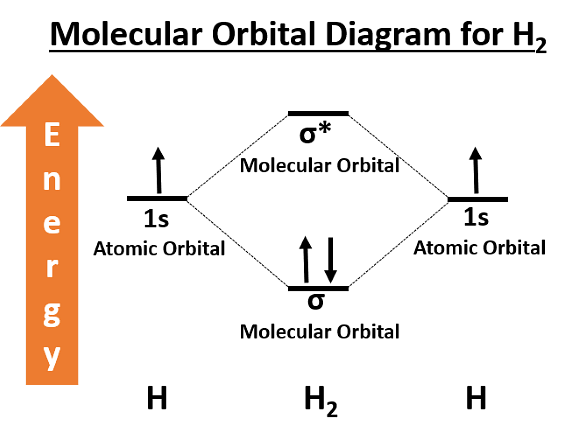The number of given orbitals which have electron density along the axis is _____ $p _x, p _y, p _z, d _{x y}, d _{y z}, d _{x z}, d _z 2, d _x{ }^2-y^2$
Correct Answer: 5
Solution and Explanation
The correct answer is 5
The orbitals \( p_{x}, p_{y}, p_{z}, d_{z^{2}}, \) and \( d_{x^{2}-y^{2}} \) are considered axial orbitals. The \( p \)-orbitals, such as \( p_{x}, p_{y}, \) and \( p_{z} \), have their lobes aligned along the x, y, and z axes, respectively.
These are termed as axial orbitals since they lie along the axis of symmetry of a molecule. The \( d \)-orbitals, specifically \( d_{z^{2}} \) and \( d_{x^{2}-y^{2}} \), also align with the axis of symmetry and are part of the axial set, which directly participate in bonding along the principal axis in a molecule.
Top Questions on Molecular Orbital Theory
- In the following, the number of paramagnetic molecules are: O\(_2\), N\(_2\), F\(_2\), B\(_2\), Cl\(_2\).
- JEE Main - 2025
- Chemistry
- Molecular Orbital Theory
Which of the following statement is true with respect to H\(_2\)O, NH\(_3\) and CH\(_4\)?
(A) The central atoms of all the molecules are sp\(^3\) hybridized.
(B) The H–O–H, H–N–H and H–C–H angles in the above molecules are 104.5°, 107.5° and 109.5° respectively.
(C) The increasing order of dipole moment is CH\(_4\)<NH\(_3\)<H\(_2\)O.
(D) Both H\(_2\)O and NH\(_3\) are Lewis acids and CH\(_4\) is a Lewis base.
(E) A solution of NH\(_3\) in H\(_2\)O is basic. In this solution NH\(_3\) and H\(_2\)O act as Lowry-Bronsted acid and base respectively.
- JEE Main - 2025
- Chemistry
- Molecular Orbital Theory
Which of the following linear combinations of atomic orbitals will lead to the formation of molecular orbitals in homonuclear diatomic molecules (internuclear axis in z-direction)?
(1) \( 2p_z \) and \( 2p_x \)
(2) \( 2s \) and \( 2p_x \)
(3) \( 3d_{xy} \) and \( 3d_{x^2-y^2} \)
(4) \( 2s \) and \( 2p_z \)
(5) \( 2p_z \) and \( 3d_{x^2-y^2} \)
- JEE Main - 2025
- Chemistry
- Molecular Orbital Theory
- Arrange the following in increasing order of bond order: (A) He\(_2^+\)
(B) O\(_2^-\)
(C) HF
(D) NO\(^-\)- CUET (PG) - 2025
- Chemistry
- Molecular Orbital Theory
- The sum of the bond orders of O$_2^+$, O$_2^-$, O$_2$, O$_2^{2-$, and the sum of the unpaired electrons in them respectively are
- AP EAPCET - 2025
- Chemistry
- Molecular Orbital Theory
Questions Asked in JEE Main exam
A bob of mass \(m\) is suspended at a point \(O\) by a light string of length \(l\) and left to perform vertical motion (circular) as shown in the figure. Initially, by applying horizontal velocity \(v_0\) at the point ‘A’, the string becomes slack when the bob reaches at the point ‘D’. The ratio of the kinetic energy of the bob at the points B and C is:

- JEE Main - 2025
- Kinetic Energy
- 20 mL of 2 M NaOH solution is added to 400 mL of 0.5 M NaOH solution. The final concentration of the solution is \(\_\_\_\_\_\) x \(10^{-2}\)M. (Nearest integer)
- JEE Main - 2025
- Solutions
- If equal volumes of AB and XY (both are salts) aqueous solutions are mixed, which of the following combination will give precipitate of AY, at 300 K?
- JEE Main - 2025
- Solutions
- If \[ \lim_{x \to 0} \frac{\cos(2x) + a \cos(4x) - b}{x^4} \] is finite, then \( a + b = \) __.
- JEE Main - 2025
- Trigonometric Equations
- A vessel at 1000 K contains \( \text{CO}_2 \) with a pressure of 0.5 atm. Some of \( \text{CO}_2 \) is converted into \( \text{CO} \) on addition of graphite. If total pressure at equilibrium is 0.8 atm, then \( K_p \) is:
- JEE Main - 2025
- Equilibrium
Concepts Used:
Molecular Orbital Theory
The Molecular Orbital Theory is a more sophisticated model of chemical bonding where new molecular orbitals are generated using a mathematical process called Linear Combination of Atomic Orbitals (LCAO).
Molecular Orbital theory is a chemical bonding theory that states that individual atoms combine together to form molecular orbitals. Due to this arrangement in MOT Theory, electrons associated with different nuclei can be found in different atomic orbitals. In molecular orbital theory, the electrons present in a molecule are not assigned to individual chemical bonds between the atoms. Rather, they are treated as moving under the influence of the atomic nuclei in the entire molecule.
